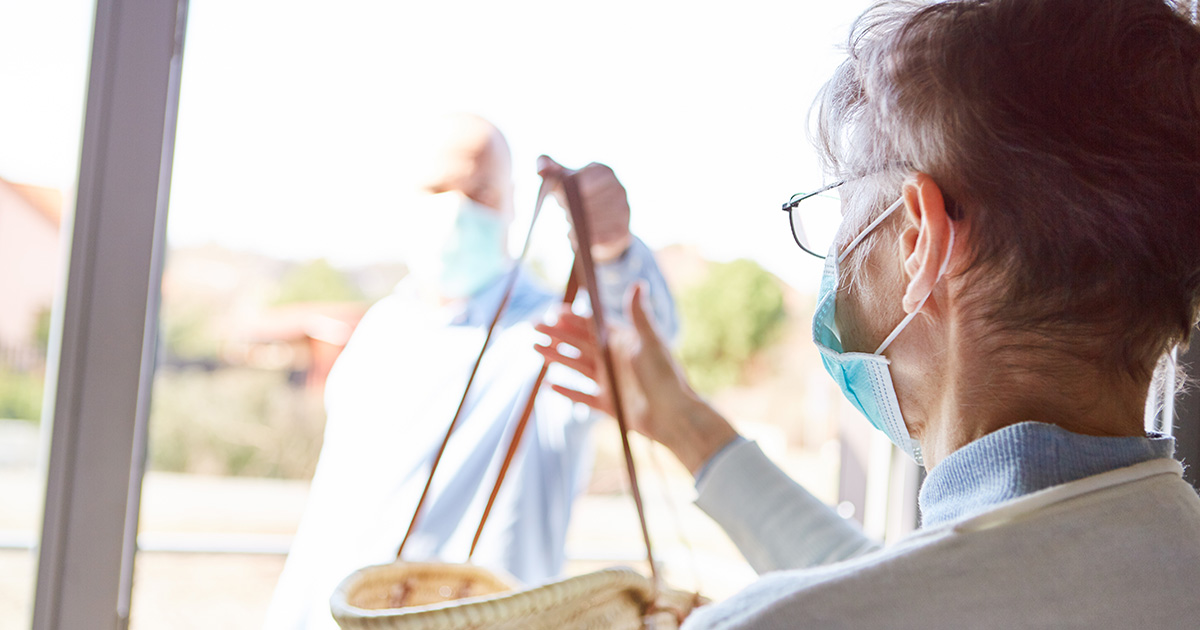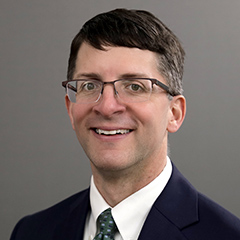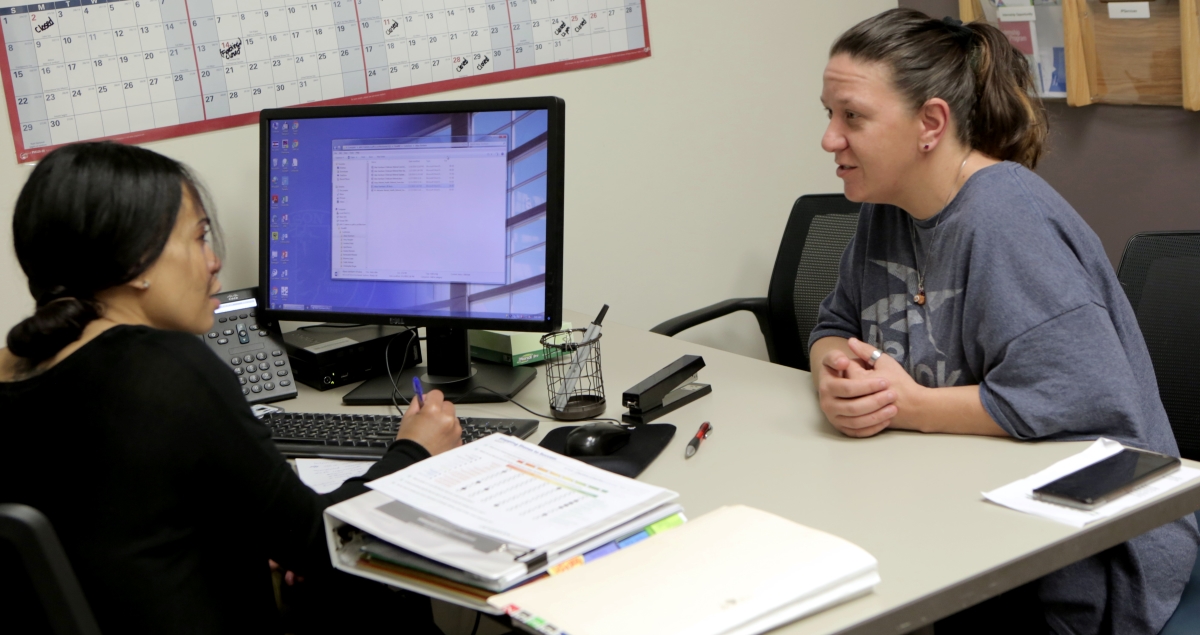In the United States, 8 out of 10 COVID-19 deaths reported have been among adults ages 65 and older, according to the Centers for Disease Control and Prevention. Given the toll this public health crisis is taking on communities across the country, we must redouble our efforts to safeguard the health and well-being of older adults, particularly those who lack sustained access to healthy food and adequate nutrition. This situation is even more urgent because many older Americans were already experiencing food insecurity before COVID-19 appeared. The nonprofit organization Feeding America estimated that about 5.5 million older adults, or 7.7 percent of that population, were food insecure in 2017. Reduced access to nutritious food, combined with social distancing to prevent spread of the virus, will likely lead to more older adults with low income experiencing hunger and food insecurity.
Nutrition programs do more than just provide meals to older adults with lower income. Many programs are also a social lifeline.
Title III-C of the Older Americans Act authorizes the delivery of nutritious meals for older adults across the country through the Nutrition Services Program (NSP), which is administered by the Administration on Aging within the Administration for Community Living (ACL). The NSP is an important resource for older adults who are struggling during the COVID-19 pandemic. Beyond promoting access to nutritious meals, nutrition education, and nutrition counseling, the NSP also facilitates social contact and conducts health promotion and disease prevention activities, all of which help older adults maintain their independence in their homes and communities. The NSP provides meals to older Americans in two ways: via group or community settings, known as congregate meals, and directly to older adults who are homebound, known as home-delivered meals. In 2018, 74 million meals were served to 1.5 million people at congregate sites, and 147 million home-delivered meals were provided to 871,000 older adults who were homebound.
Now that many congregate meal sites for older adults are closing or finding alternative means of service delivery, some older Americans are struggling to maintain this valuable social lifeline. To address these challenges, policymakers should consider how to provide additional funding and flexibility to the NSP so that it can deliver on its goals, generally and in a time of crisis. These goals include (1) reducing hunger and food insecurity, (2) promoting socialization, (3) promoting health and well-being, and (4) delaying or avoiding adverse health conditions and institutionalization. Data collected from 2015 to 2016, for example, show that older adults who participated in congregate meals had greater food security and higher levels of socialization than nonparticipants. In addition, older adults who participated in congregate meals or home-delivered meals had higher diet quality, and program meals made a substantial contribution to their diets. Similarly, data collected from Medicare administrative records from 2015 to 2017 reveal that older adults who participated in congregate meals were less likely to be admitted into long-term care facilities or nursing homes compared with those who did not participate. Our analysis also found that congregate meal participants who lived alone were less likely than nonparticipants to have a hospital admission or an emergency department visit that led to a hospitalization.
States, nonprofit organizations, and volunteers pave the way forward.
The NSP is critical to ensuring that food-insecure and socially isolated older adults (as well as other populations with barriers to food access) can stay fed and healthy during the COVID-19 pandemic. It is heartening see organizations such as the National Council on Aging provide older Americans with resources on how to access meals during this crisis and how to connect with networks of providers such as Meals on Wheels and Feeding America to manage food delivery services. And states and localities are making progress, too.
In Nevada, for example, requests for food delivery increased by 30 percent among older Americans. Groups that provide food to the state’s most vulnerable populations are seeing huge increases in need. Three Square, a local food bank, had more than 180 agency partners before the pandemic, but it had to suspend operations with 170 of them because of the closure of nonessential businesses. To make up for the difference, the food bank is offering 24 drive-through distribution sites throughout the state, including some at shuttered schools and casinos. To reach the roughly 12,000 older adults that Three Square serves, the food bank also uses city buses donated by the Regional Transportation Commission of Southern Nevada.
As a result of social-distancing requirements, many NSP distribution sites are also struggling to get help, to find delivery drivers, and to connect directly with older Americans who greatly benefit from the face-to-face social interaction they receive from food delivery services. Without volunteers and without the facility space to serve hot meals, many meal sites are shifting to prepackaged, ready-to-go foods instead. These challenges are likely to impact the nutritional quality of meals provided to older adults. But in places like Seattle, many organizations that typically serve older adults are finding ways to continue serving people nutritious meals despite these challenges. Hundreds of local volunteers have built fresh food delivery programs—grassroots-style. They are using Facebook, for example, to recruit volunteers, whereas others are using city shuttles that otherwise aren’t being used.
I am also encouraged by cities such as Cambridge, Massachusetts, where restaurant owners that can’t open to the public are now preparing meals for local homeless shelters no longer able to use volunteers to cook meals. This kind of community partnership, program ingenuity, and resource investment shows a joint desire to protect the most vulnerable members of our community. By putting these ingredients together, I think we’ll come out of this crisis knowing that we weathered the storm together.
This goes beyond simply needing more resources.
Even before the COVID-19 pandemic, the costs associated with administering programs such as the NSP were on the rise. Buying ingredients and delivering meals is expensive, fresh produce and food storage options are extremely limited, and transportation costs are skyrocketing. In late March, Congress passed a COVID-19 relief package that included $955 million in funding for the ACL to expand protections for people with disabilities and support nutrition programs, home and community-based services, and family caregiver support. The relief package also included $15.5 billion in additional funding for the Supplemental Nutrition Assistance Program in a good faith effort to help older adults and other low-income Americans who are struggling.
I am also hopeful that we’ll use this time, and any additional stimulus funding that might be infused into the NSP, to identify best practices for successfully addressing older adults’ food and health needs during any future waves of the pandemic. Through ongoing evaluation, assessment, and data analysis, we need to make certain that these programs are properly implemented and that they achieve their intended goals. It goes beyond simply needing more resources; it’s about how well we’re using those resources, and how we must strive to help vulnerable people who are at risk.
Learn more about Mathematica’s nutrition policy research by visiting our web page.



